INTRODUCTION
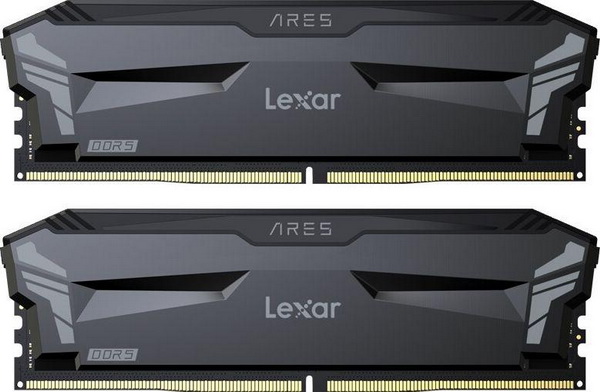
The introduction of DDR5 RAM in the market late last year may have been somewhat bumpy (both due to incompatibilities with certain motherboards and high temperatures at high frequencies) but the arrival of the new AMD X670E and Intel Z790/B660 motherboards should change all that. This is no doubt why even at first reluctant manufacturers have now begun to release their very own DDR5 RAM kits, some of which in large numbers at that. Lexar is one such manufacturer and after testing most of their DDR4 RAM lines over the years (not quite done however, some such reviews are still pending) today with me i have their ARES OC 32GB DDR5 5200MHz CL38 Dual-Channel Kit.
For more than 25 years, Lexar has been a trusted leading global brand of memory solutions. Our award-winning lineup includes memory cards, USB flash drives, card readers, solid-state drives and DRAM. With so many options, it’s easy to find the right Lexar solution to fit your needs. All Lexar product designs undergo extensive testing in the Lexar Quality Labs with more than 1,100 digital devices, to ensure performance, quality, compatibility, and reliability. Lexar products are available worldwide at major retail and e-tail stores. For more information or support, visit www.lexar.com.
The ARES OC dual-channel (2x16GB) kit is currently the sole DDR5 RAM kit in the entire Lexar lineup (soon to change) and features a frequency of 5200MHz with a CAS latency (CL) of 38 at 1.25V (XMP 3.0 support). For the ARES OC DDR5 RAM modules Lexar has used grey and black aluminum heatspreaders over Micron single-die DRAM chips and much like other DDR5 kits this one also features on-die ECC (error correction code) together with built-in power management IC (PMIC) and temperature sensors. Finally, as with their other RAM lines the ARES OC DDR5 kit by Lexar is covered by a limited lifetime warranty.
SPECIFICATIONS AND FEATURES

THE ARES OC 32GB 5200MHZ CL38
Typically, the front of the box is mostly taken by a product picture surrounded by the company logo, product line name and the capacity and frequency of the kit.
A few words about the product are placed at the rear in two languages and just over the kit specifications.
The grey and black aluminum heatspreaders of the ARES OC DDR5 modules do look nice.
As usual at the rear of each module we find a small sticker with its specifications on it.
The lack of ARGB lighting may push some potential buyers away but I’ve never cared about that much.
Here you can see how the 43.25mm tall Lexar ARES OC DDR5 module compares to the 39.8mm tall Neo Forza TRINITY RGB DDR5 module.
In terms of looks since this kit has no ARGB/RGB lighting it doesn't really stand out.
Here you can see some details about this particular kit thanks to Thaiphoon Burner.
TEST BED
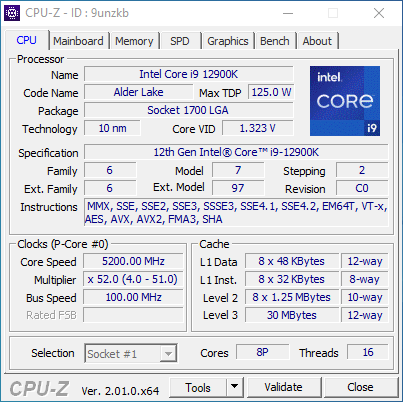

TESTING METHODOLOGY
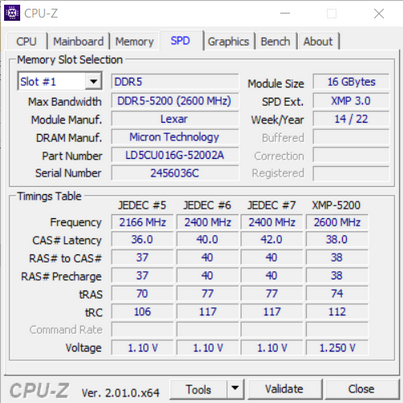
Thanks to XMP (2.0/3.0) profiles the only thing one needs to do in order to run this RAM kit at its advertised frequency, timings and voltages is to choose/enable it from within the BIOS and reboot. That being said if you're into overclocking you may not wish to use the main XMP profile but instead to choose your very own frequency, timings and voltages to achieve even higher performance numbers and that's exactly what we'll also be doing during our DDR4 tests. To be more specific aside testing each kit with its XMP profile we will also be upping the voltages (up to 1.4V max – even though most kits can function at higher voltages I don’t recommend doing so / RAM modules that use 1.4V/1.45V/1.5V will be tested up to 1.45V/1.5V/1.55V respectively) and frequencies (200MHZ increments) until i find the maximum achievable stable frequency. I also thought about upping voltages and reducing timings instead of increasing the frequency of the modules as high as it can go (always stable and without using 0.5-1V over stock) but the end results are pretty much identical.
As for the how I'll be testing each DDR4/DDR5 Quad/Dual-Kit to arrive in the lab well there aren't that many benchmark programs that only test RAM (or at least RAM and CPU without anything else coming into play) but I’ve got most of them and so you will be seeing results from following benchmarking programs****, AIDA64 Engineer Edition, Cinebench Release 20, MaxMemm2, Passmark Performance Test (v9 for DDR4 and v10 for DDR5 tests), Sisoftware Sandra Titanium and WPrime v1.55. All tests are performed on a fresh Windows 10 Pro installation (complete with all updates until the day of this review) and are repeated a total of 6 times after which the average numbers get recorded into the charts.
* In addition to Quad-Channel tests since March 2020 I’ll also be using the brand new I9-9900K+Z390 DARK test rig (check above) for Dual-Channel RAM tests.
** Since May 2020 three game benchmarks (Assassin’s Creed Odyssey, GEARS 5 and Metro Exodus tested on the X299 system at 1080p resolution and with the ASUS ROG RTX2060 OC set at Gaming Mode) have also been added in the charts.
*** In September 2021 i replaced the Intel I9-9900K+Z390 DARK test rig for a brand new Intel I9-11900K+Z590 DARK one (you can access all the Z390 DARK based tests here).
**** For DDR5 tests I’m using the Intel Core I9-12900K (E-Cores Off / RING 4.9GHz) and in order to showcase potential gains between stock and overclocked clocks/frequencies I’ll also be using Forza Horizon 5 (1080p/Extreme Graphics).
TEST RESULTS - XMP PROFILE / DUAL CHANNEL
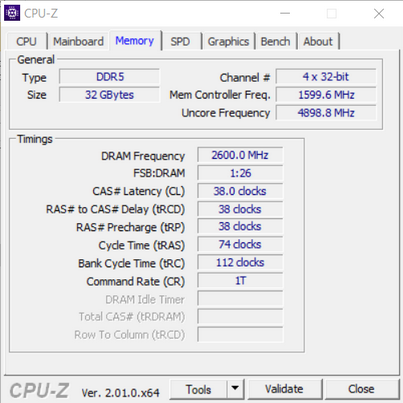
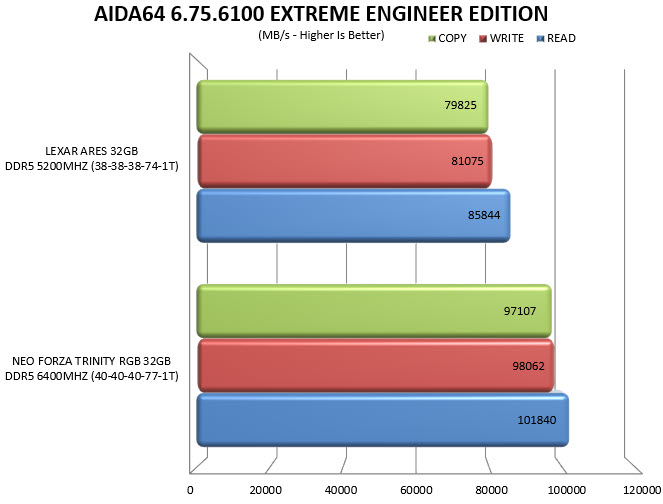

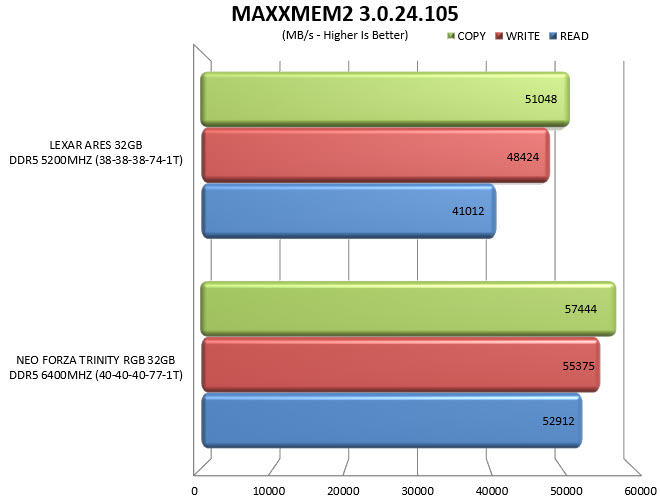


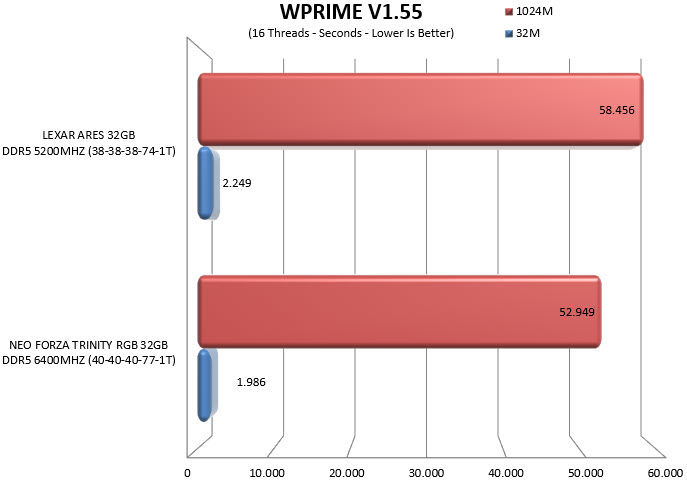
TEST RESULTS - OVERCLOCK / DUAL CHANNEL
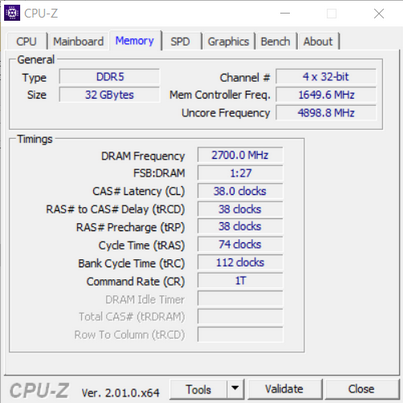
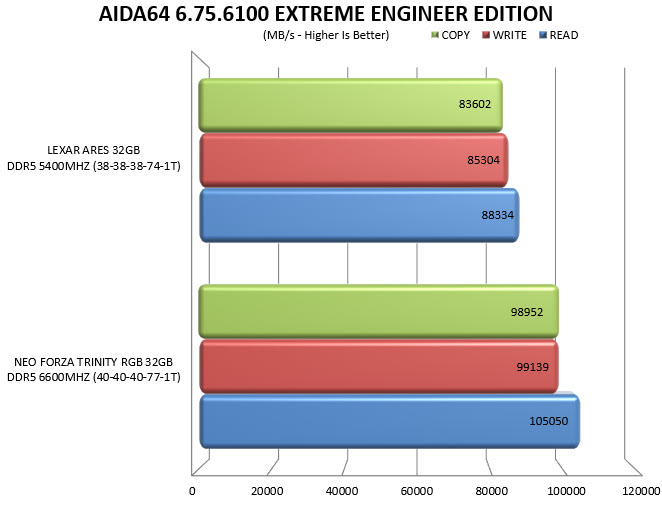

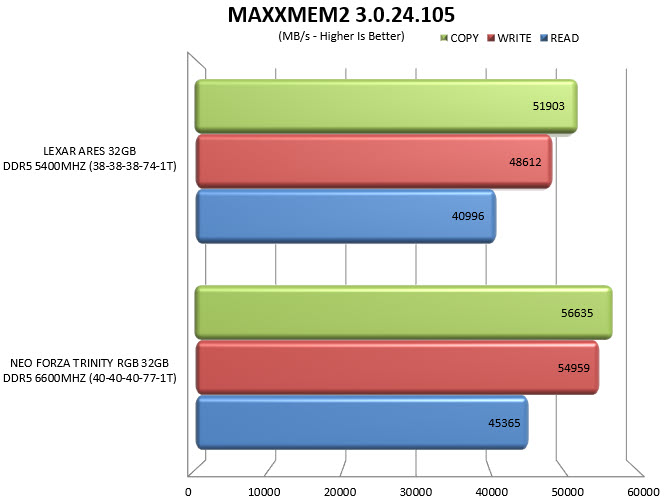
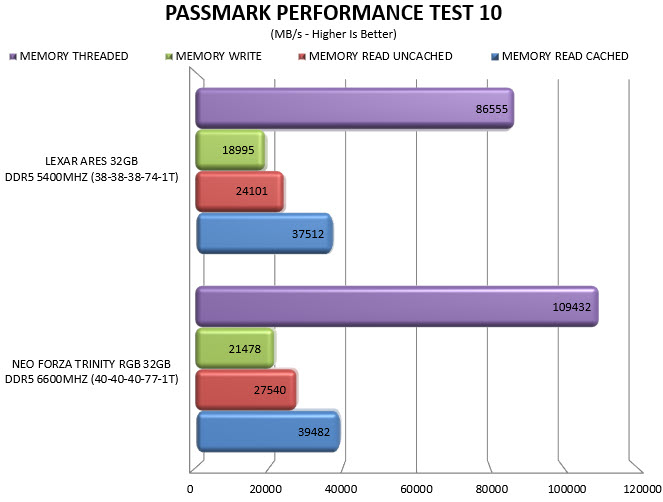

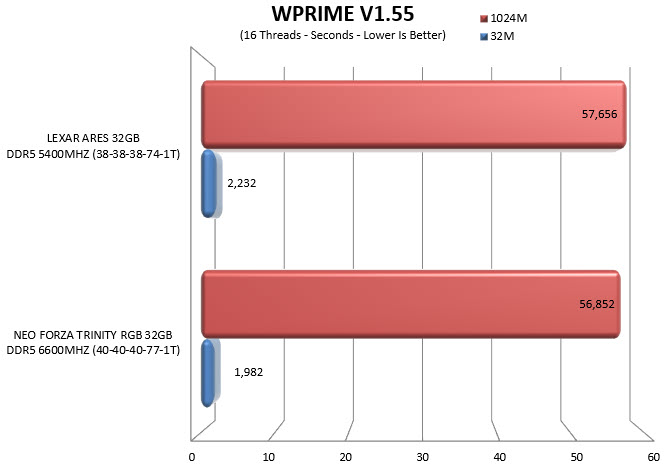
TEST RESULTS – FORZA HORIZON 5
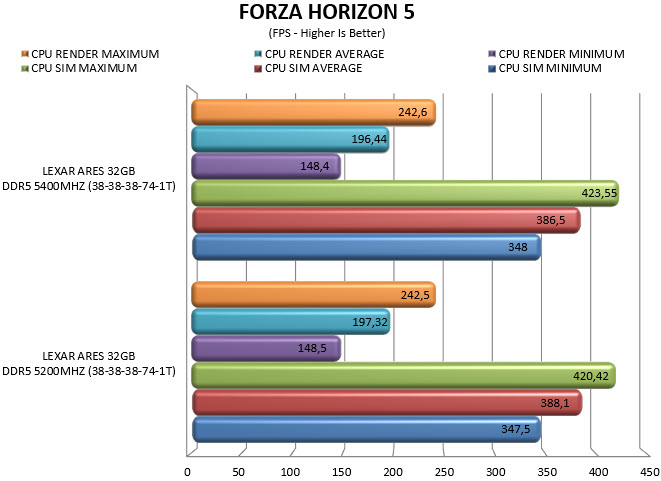
CONCLUSION
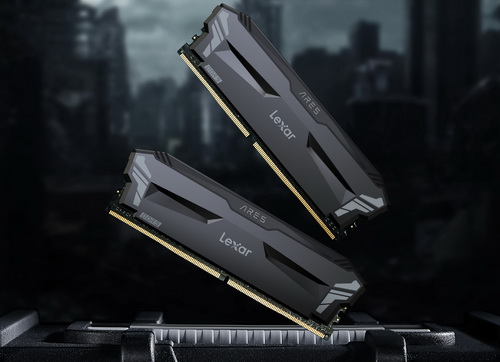
The fact that the ARES OC is Lexar’s very first entry in the DDR5 market coupled with its less than impressive frequency and timings were enough for me to not expect any miracles in terms of performance. Needless to say, I was right but unlike DDR4 there’s something else that matters with DDR5, temperatures. This is actually a serious issue with kits surpassing 6000MHz (even more so for kits that get close to 7000MHz) so buying a slower kit is a good way for you to avoid this possible issue. Of course, If I was Lexar, I’d move closer to 6000MHz and not 5200MHz (safe up to that) but my guess is it shouldn’t be long before we see such kits from them (ARGB lighting would also be nice). The fact that the ARES OC line is limited to just one kit right now (strangely enough I do see an 32GB 4800MHz CL40 kit in stores, still not listed on the Lexar website) is also an issue but again, it shouldn’t be long before we see more kits from them.
At the time of this review the Lexar ARES OC 32GB DDR5 5200MHz CL38 Dual-Channel Kit retails for USD199.99 inside the USA (Amazon.com) a price tag which is actually more or less ok for such a kit (EU pricing is a mess right now so not even worth mentioning). Overall, the ARES OC may not bring anything new to the table and it doesn’t impress with its performance but due to its good looking aluminum heatspreaders and low temperatures it could be exactly what you’ve been looking for.
PROS
- Build Quality
- Relatively Good Performance (5200MHz CL38)
- Thin Heatspreaders
- Low Temperatures
- Limited Lifetime Warranty
CONS
- Current Availability
- EU Price (For some)
- Available Kits

 O-Sense
O-Sense





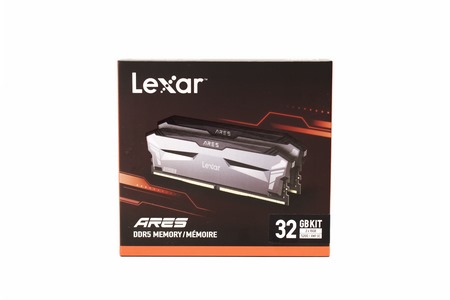

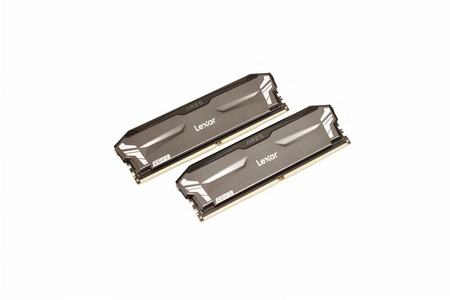
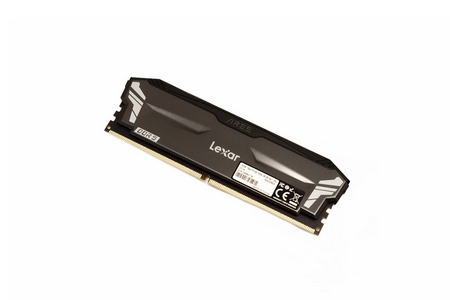



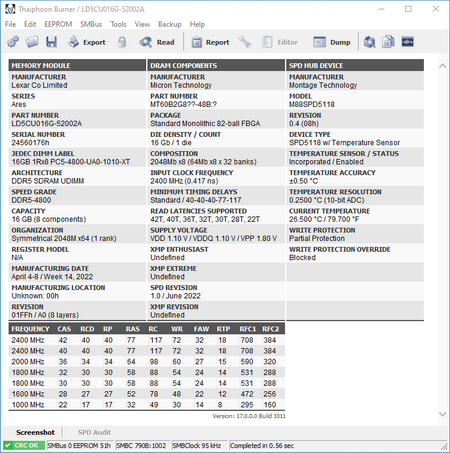


.png)

